Small- and medium-sized towns across Europe are losing talented young people to bigger cities—a problem that has serious negative consequences. Many cities now recognize that they must act against brain drain. But can they realistically fight back? And what exactly should they do?
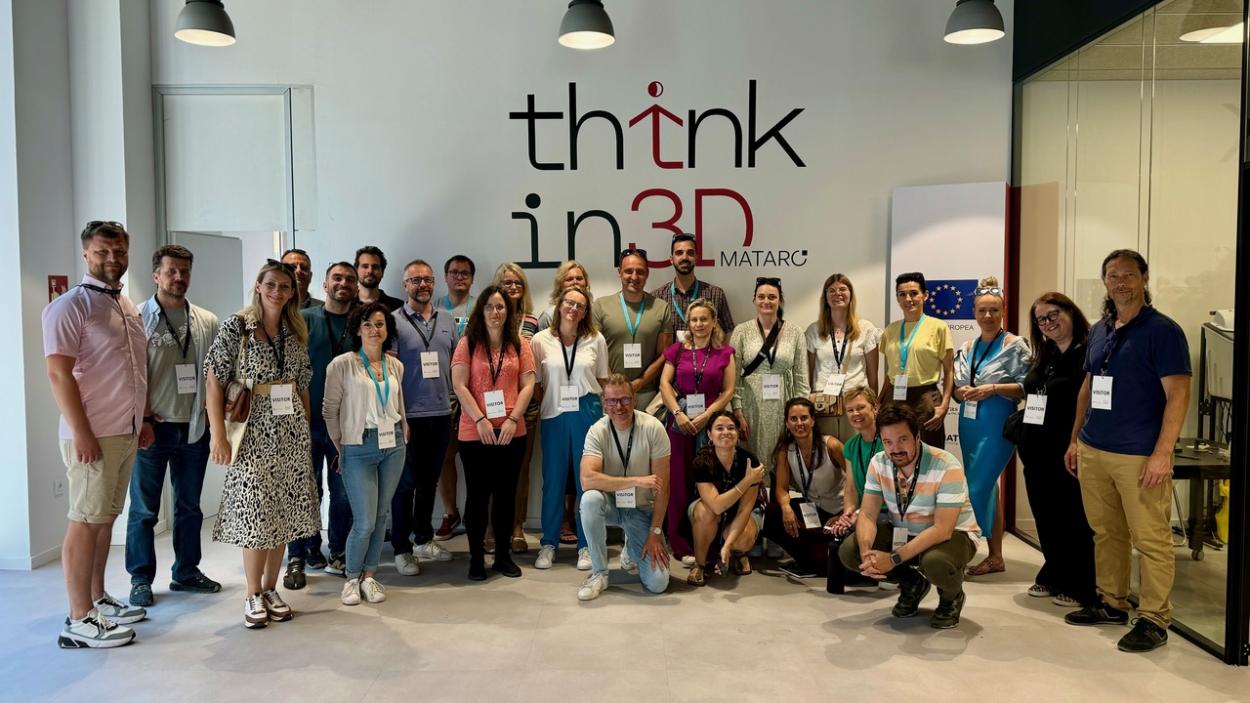
In 2023, a group of European cities launched the C4TALENT (Cities for Talent) URBACT Action Planning Network to answer these questions. At the start, they weren’t even sure if meaningful action was possible. Now, 18 months later, they are not only confident that they can slow brain drain but also well-versed in effective strategies. Working together with local stakeholders, they are developing integrated action plans (IAPs) with specific solutions to confront the challenge head-on.
“A City So Irresistible Everyone Wants to Stay”
One partner’s key takeaway from our Masterclass on Talent Attraction and Retention summed it up:
“In order to charm top talent, we must create a city so irresistible that everyone wants to stay!”
This course revealed that attracting talent is not a one-off effort or solely the job of the local authority. It requires all stakeholders—local government, employers, institutions, service providers, and residents—to work together. By highlighting a city’s unique identity—its brand, heritage, and character—they can build an authentic narrative that appeals to talent. Equally important is nurturing a strong social network and a welcoming, inclusive culture where newcomers feel at home.
The course also stressed that success lies not only in drawing people in but also in helping them settle and integrate in the local community. Providing the right support and connecting newcomers with local opportunities is essential. Moreover, involving talent in the city’s ongoing development can help attract even more skilled individuals. In short, municipalities must move beyond generic promotion to create a compelling narrative that showcases their unique lifestyle, career opportunities, and sense of belonging.
Talent Attraction Management
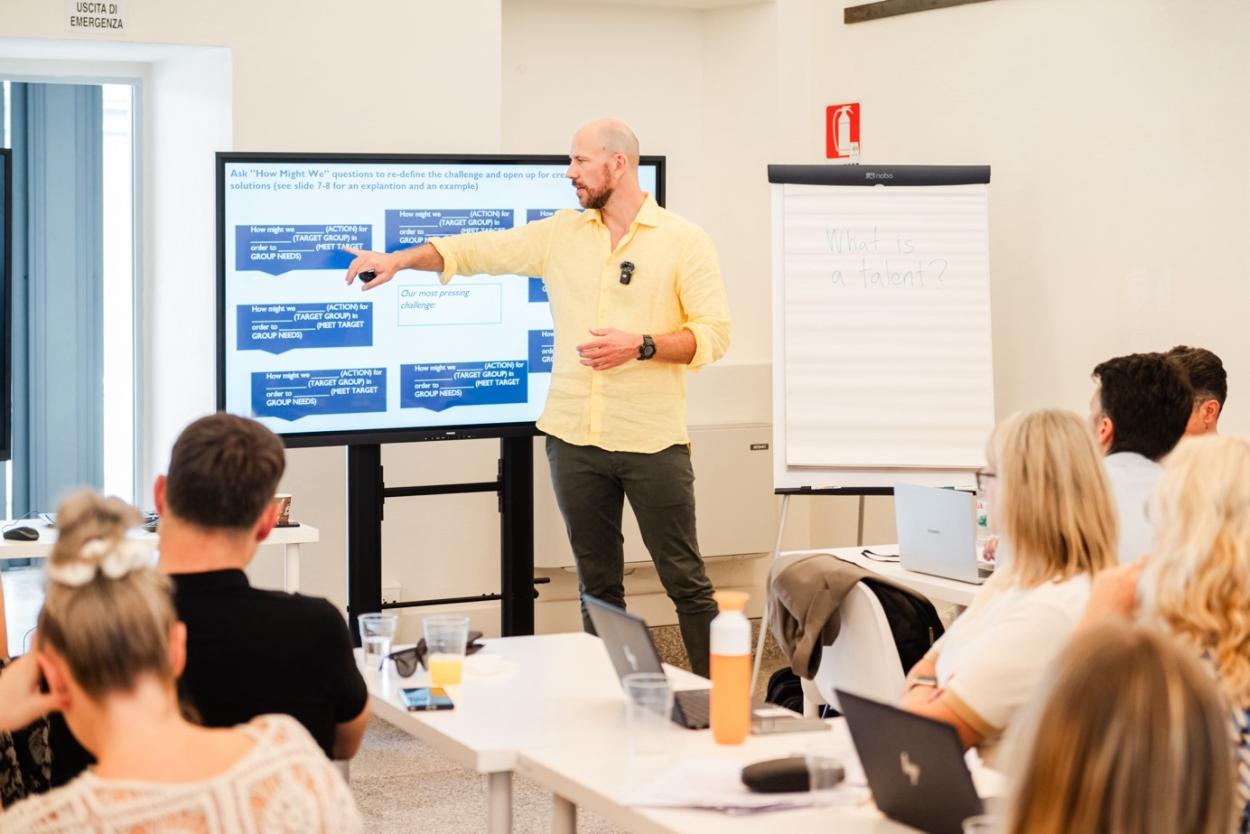
Building on these principles, our Masterclass trainer Marcus Andersson from Future Place Leadership introduced the Talent Attraction Management framework. This approach guides cities in crafting strategies to both attract and retain talent.
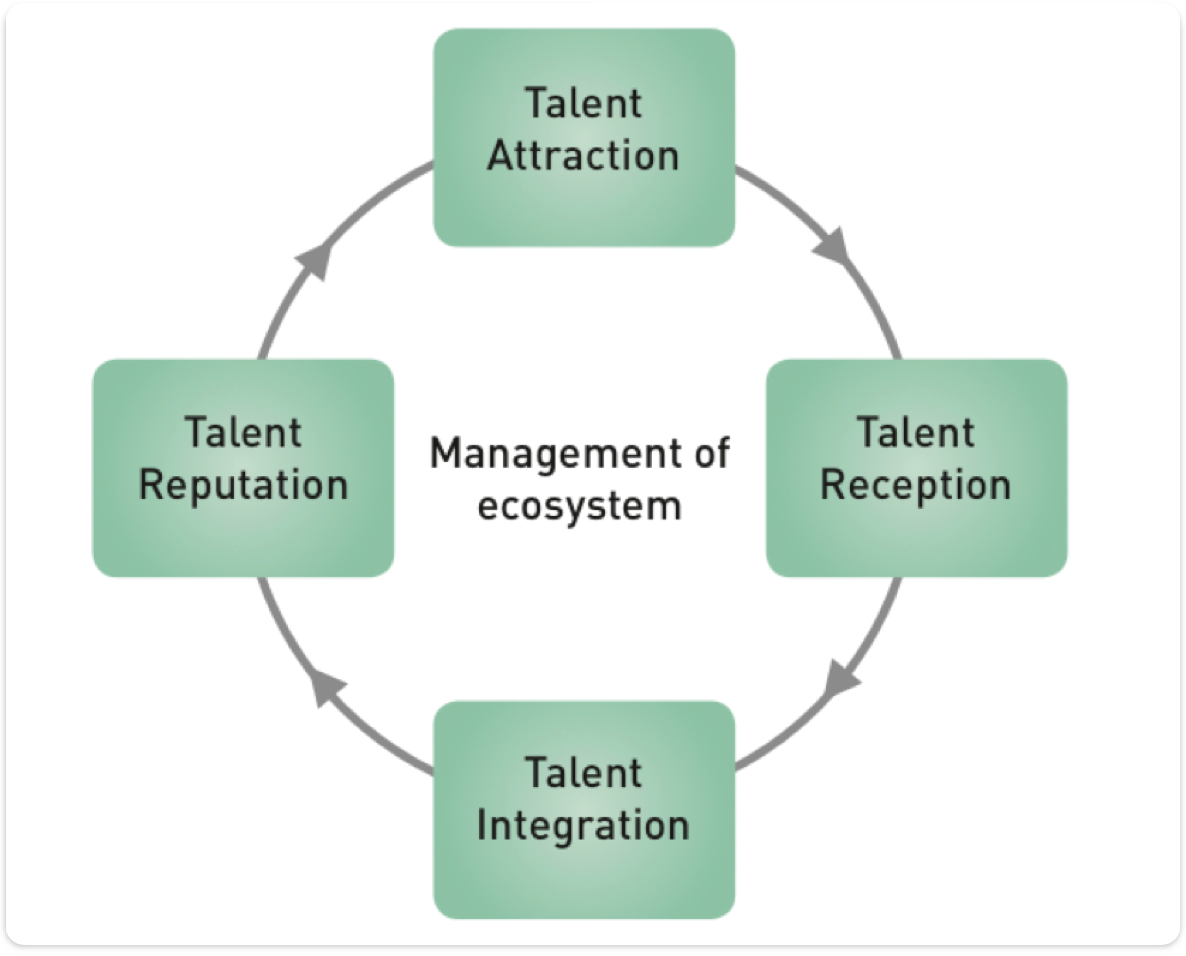
1. Figure: Talent Attraction Management Framework (Source: Tools and Strategies for innovative Talent Attraction and Retention – a Handbook on Talent Attraction Management for Cities and Regions (Tendensor, January 2014)
Talent attraction strategies are essential for making a city visible and appealing to potential newcomers. Cities can achieve this through:
- Targeted online campaigns
- Participation in international and regional events, trade shows, and job fairs
- User-friendly online platforms offering essential information
- Platforms connecting talent with employers
- Guidance for local businesses on recruitment and onboarding
The reception phase focuses on ensuring a smooth and welcoming transition for newcomers, addressing practical and emotional needs, including activities like:
- Streamlining administrative processes digitally and in person
- Organizing reception events that introduce newcomers to local networks and provide a warm welcome
- Offering tailored support (job search assistance for spouses, school and daycare access)
- Assisting with temporary housing options
- Providing quick access to essentials like bank accounts and internet services
Integration support is aimed at fostering long-term connections and help talent build meaningful lives in their new city. Support activities include:
- Ensuring access to affordable, long-term quality housing
- Offering courses in the local language to boost professional and social integration
- Providing career development support individuals see long-term potential in staying
- Creating platforms for connections with peers, mentors, and community members
- Encouraging participation in cultural and recreational and community activities to improve overall quality of life and to create sense of belonging.
A city’s reputation as an attractive place to live and work is a cornerstone of its talent management strategy. Managing reputation involves:
- Developing a strong, authentic identity that reflects unique local strengths and values
- Running promotional campaigns highlighting lifestyle benefits, career opportunities, and success stories
- Showcasing cultural richness, recreational options, and work-life balance
- Clearly communicating why the city stands out for talent and investment
Linking Entrepreneurial Ecosystems with Talent Attraction
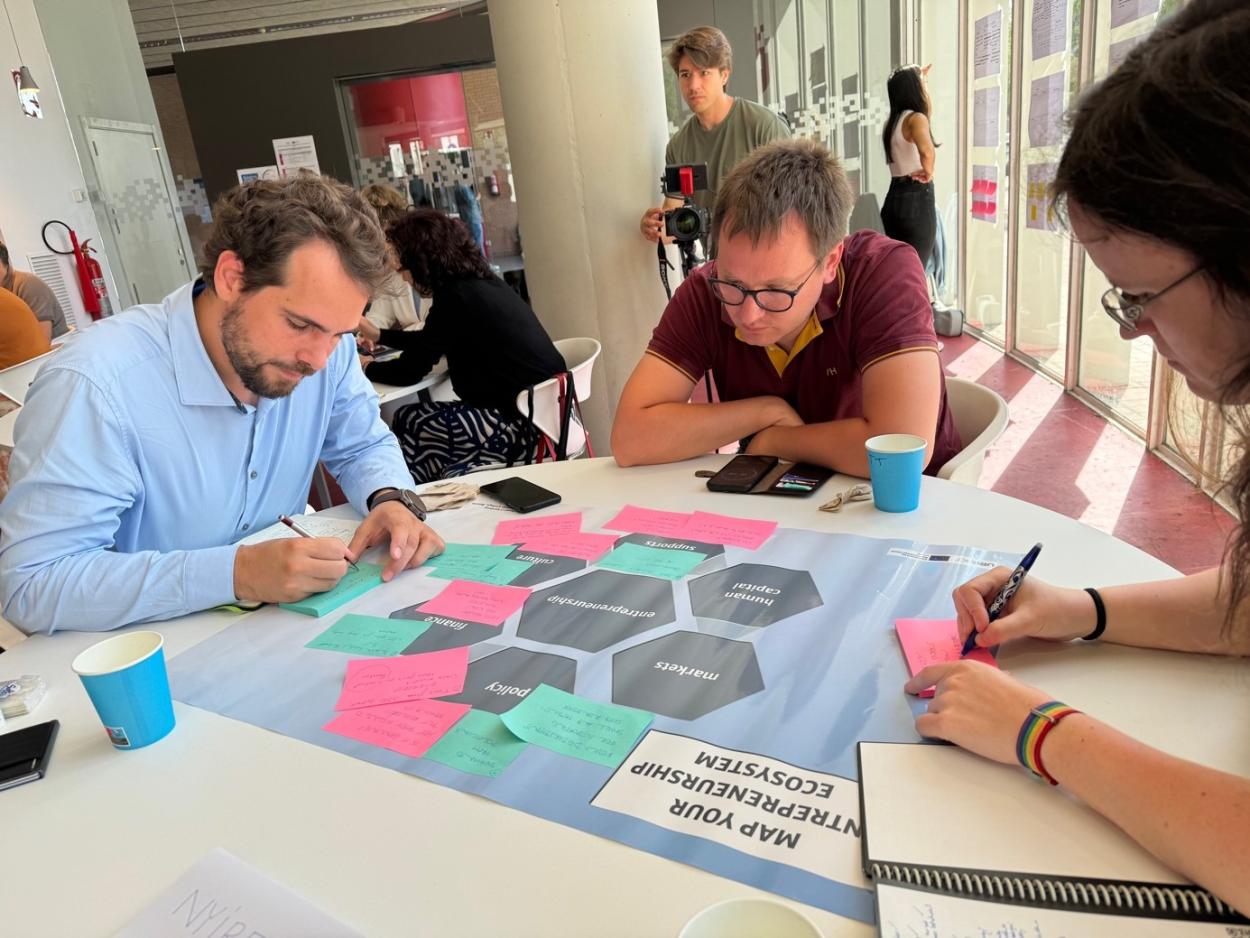
C4TALENT not only focuses on talent attraction and retention but also on improving conditions for entrepreneurship. A thriving entrepreneurial ecosystem is crucial for attracting talent—especially those who aspire to launch startups. While small towns often excel in quality of life, they may lag behind larger cities in offering conditions for starting and growing a business.
A strong ecosystem can boost local business creation, foster innovation, and generate employment opportunities that help keep residents from leaving. However, the local authority (or any other organisation, for that matter) cannot create an entrepreneurship ecosystem from the top down. Typically, a thriving entrepreneurial environment evolves organically.
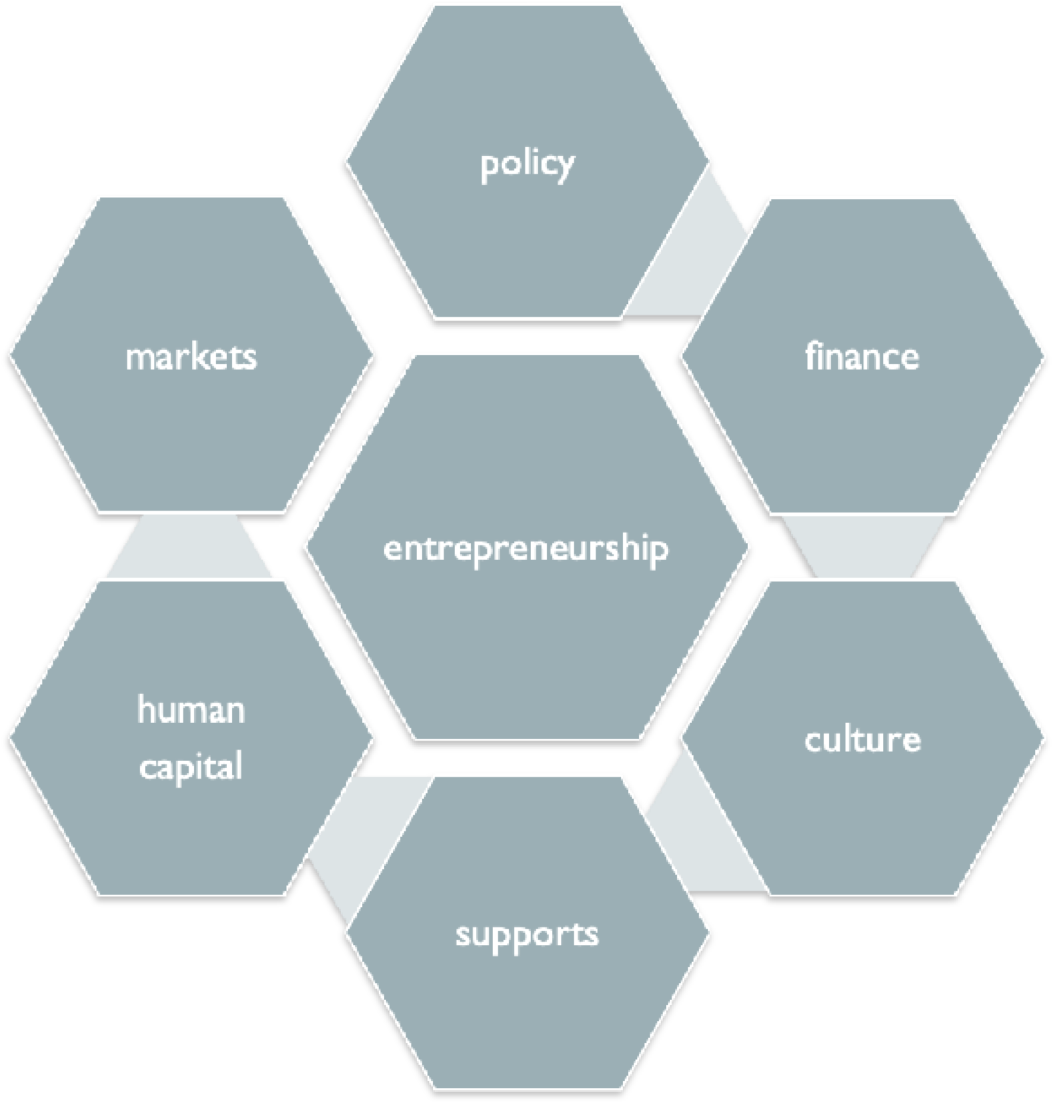
2. Figure: Entrepreneurial Ecosystem Model (Source: Isenberg’s model of an entrepreneurship ecosystem (Daniel Isenberg, 2011)
As we have learnt from our trainers at our Entrepreneurial Ecosystem Masterclass (Tracey Johnson & Alison Partridge), maintaining a healthy entrepreneurial ecosystem is certainly not easy or straightforward. As Tracey has put it: “it is about “curating chaos” – the municipality must know its role: when to step in with support and when to step back.” What the local authority can (and should) do is “simply” to create the right conditions by:
- Establishing clear policies and programs to support entrepreneurs
- Ensuring access to a variety of financing options (angel investment, equity, debt, grants, crowdfunding)
- Promoting an entrepreneurial culture through public and private spaces that encourage networking, chance meetings and knowledge sharing, shaping an entrepreneurship community built on a genuine “pay-it-forward” mentality
- Providing support infrastructures like incubators, accelerators, maker-spaces, and co-working spaces along with mentorship and peer networks
- Helping to nurture a pool of local talent and skilled labour through flexible educational programs that meet startup needs
- Facilitating easy access to local, regional, and international markets
An Intensive Learning Journey
At the project’s outset, a Training Needs Analysis identified the knowledge gaps and training needs of our partners. This analysis informed a tailored learning journey designed to improve thematic knowledge and support the co-creation of integrated action plans.
The learning journey included a series of masterclasses—half-day to one-day sessions that provided deeper insights and practical details. We delivered these sessions in person during core network meetings, which enhanced efficiency, reduced travel, and even contributed to cutting travel-related emissions. To date, masterclasses on entrepreneurial ecosystems and talent attraction and retention have been held, with a third planned on place branding.
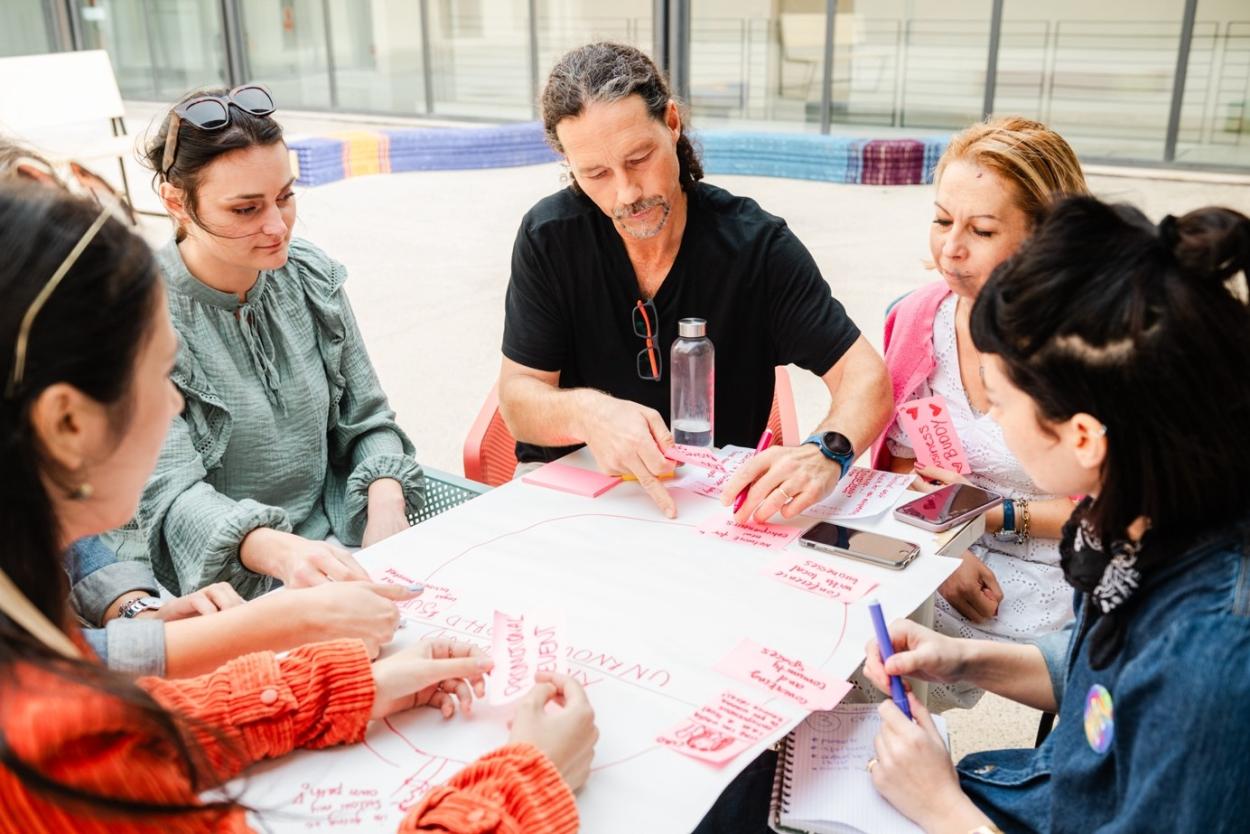
Short, intensive study tours have also been organized. These tours let partners observe best practices firsthand and gather inspiration for their IAPs. Linked to our core network meeting in Vilanova I la Geltrú, Spain, partners had the opportunity to visit TecnoCampus Mataró and Norrsken House Barcelona. The idea of local study tours using a common methodology has also emerged and will be explored further at our next network meeting in March.
Alongside thematic training, partners have received support in co-creating action-oriented plans with their local stakeholders - through webinars, peer reviews, and expert guidance. In webinars, partners reviewed pre-recorded eUniversity content prior to the session and then engage in discussions and interactive exercises during the webinar to apply new methods.
Peer support has also played a key role in the development of the IAPs. At each network meeting we have dedicated a session to peer reviewing IAP drafts. Partners find their peers inputs extremely helpful.
Finally, dedicated expert support is also important to help IAP development: in addition to the regular detailed feedback of the Lead Expert (delivered and discussed during one2one calls), an experienced ad-hoc expert has also been involved to bring in an outside perspective.
What’s Next?
Thanks to this intensive learning journey, all C4TALENT partners have made significant progress toward advanced drafts of their Integrated Action Plans. In 2025, partners will deliver full drafts by the end of the first quarter, which will then undergo peer review at the upcoming core network meeting in Roeselare, Belgium (week of March 17).
While every partner has made a significant progress with their IAP, they still report difficulties that may risk timely completion of the integrated action plans. One of the challenges most partners face is maintaining the engagement and motivation of local stakeholders for the subsequent phases of action planning. Some partners also struggle with sustaining political commitment and support. Finally, in some cases scarce local capacities make it difficult to follow the tight schedules of the URBACT project.
Overall – despite the risk factors indicated above – the partnership is confident that by the end of their URBACT journey each partner will deliver a plan that can help to develop entrepreneurial ecosystem and fight brain-drain. While the plans differ in ambition, they are all expected to trigger meaningful local change and, in some cases, lead to major tangible developments.


